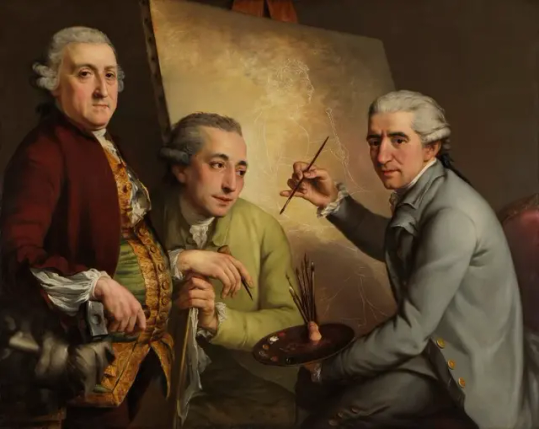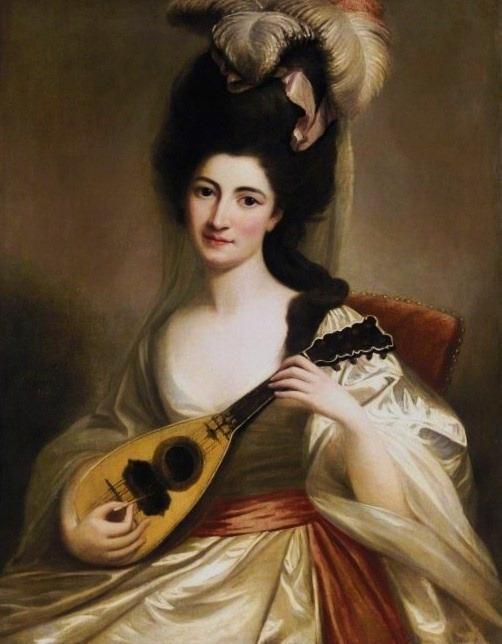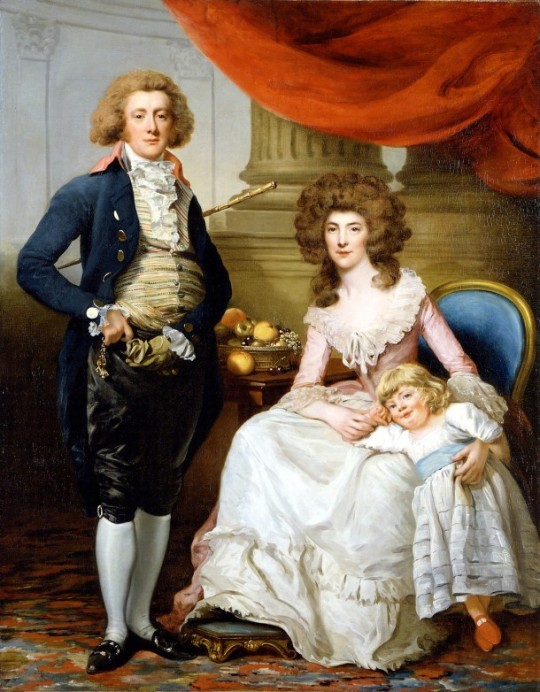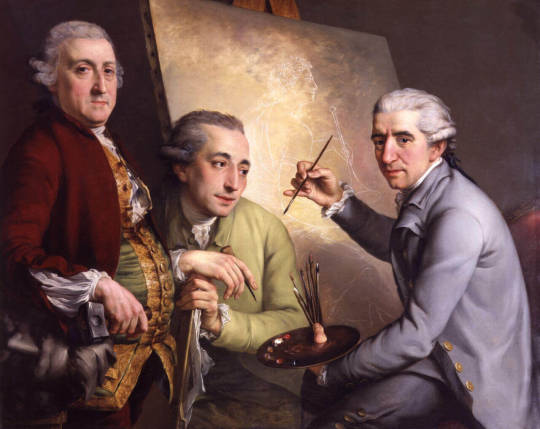#john francis rigaud
Explore tagged Tumblr posts
Text

John Francis Rigaud
322 notes
·
View notes
Text

Samson breaking his bands, John Francis Rigaud
82 notes
·
View notes
Text

Agostino Carlini; Francesco Bartolozzi; Giovanni Battista Cipriani
Artist: John Francis Rigaud (Italian, French descent, 1742-1810)
Date: 1777
Medium: OIl on canvas
Collection: National Portrait Gallery, United Kingdom
Description
Painting of three three-quarter length figures gathered before an easel: Agostino Carlini stands on the left; Francesco Bartolozzi is sitting between him and Giovanni Battista Cipriani, who sits with brush in hand before a canvas.
#painting#group portrait#men#three quarter length#agostino carlini#francesco bartolozzi#giovanni battista cirpiani#oil painting#artwork#studio#easel#canvas#painter palette#costume#oil on canvas#fine art#john francis rigaud#french painter#french art#18th century painting
18 notes
·
View notes
Text

Allegory of Peace
Artist: John Francis Rigaud (French, 1742-1810)
Date: 1797
Medium: Oil on canvas
Collection: Private collection
Description
In 1797 Rigaud was commissioned to paint four paintings depicting the allegories of Happiness, Innocence, Wisdom and Providence. The paintings were intended to be dedicated to King George III and Queen Charlotte for the celebration of the 40th anniversary of their reign. Rigaud produced the rectangular version of the allegories painted earlier for the angular corners between the arches under the dome of the Common Council Chamber at Guildhall in the City of London. In the rectangular version, the painter turned the Allegory of Happiness into a representation of peace.
#allegorical art#oil on canvas#john francis rigaud#peace#allegorical painting#landscape#ship#classic building#trees#baby#woman#children#french painter#18th century painting#beauty#abundance
6 notes
·
View notes
Text

They are soooooooo homosynphrone
(Francesco Bartolozzi; after John Francis Rigaud, The Meeting of Ulysses and Penelope, 1788)
#greek mythology#tagamemnon#the odyssey#mythology memes#odysseus#penelope#odypen#odysseus of ithaca#penelope of ithaca#athena also matches their freak but platonically#she isn't the focus here though
85 notes
·
View notes
Text

The meeting of Ulysses and Penelope (1788)
Francesco Bartolozzi; after John Francis Rigaud
17 notes
·
View notes
Link
0 notes
Text
This tribute edit is for #louisxvii And his family members of France and I might have forgotten others in heaven rest in peace to those who have died Louis XVII, Louis XVIII, Louis XVI, Marie Antoinette, Louis XIV, Coco the dog of Louis XVII and his sister Marie-Thérèse, Marie-Thérèse Charlotte, Princess Sophie Hélène Béatrice of France, Louis Joseph Xavier François, Jean Amilcar, Louis Antoine, Duke of Angoulême, Louis, Dauphin of France, Charles X of France, Élisabeth Philippe Marie Hélène of France, Maria Josepha Karolina Eleonore Franziska Xaveria of Saxony, Madame Louise-Elisabeth of France, Maria Carolina of Austria, John II of France, Armand Gagné, Alexander Kucharsky, Rigaud, Hyacinthe dit aussi Rigau y Ros, (Perpignan, 1659 - Paris, 1743), Jeanne Bécu, Comtesse du Barry, Francis I was Holy Roman Emperor, Robert, Count of Clermont, Joseph II, Holy Roman Emperor, y'all rest well up in heaven All angels All angels All angels All angels All angels All angels up in heaven rest in peace
1 note
·
View note
Text

Samson breaking his bands, John Francis Rigaud
1 note
·
View note
Photo

Détail de « Joseph Nollekens avec son buste de Laurence Sterne », par John Francis Rigaud, 1772.
Detail of "Joseph Nollekens with His Bust of Laurence Sterne", by John Francis Rigaud, 1772.
#art#painting#18th century#English art#British art#John Francis Rigaud#Academicism#1700s#1700s art#detail#classical art
434 notes
·
View notes
Photo






1780s dresses -
Top left 1782 Lady playing a mandolin by David Martin (location ?). From tumblr.com/sims4rococo76 502X644.
Top right ca. 1782 John Moultrie III and Family by John Francis Rigaud (Gibbes Museum of Art - Charleston, South Carolina, USA). From weeberry.tumblr.com/post/128775612786/history-of-fashion-ab-1782-john-francis-rigaud/amp 610X782.
Second row Lady by Adélaïde Labille-Guiard (auctioned by Sotheby's). From tumblr.com/antiquelaceartist 1280X1582.
Third row left 1783 Christine-Geneviève, Madame Mitoire, with her children Alexandre-Laurent and Charles-Benoît by Adélaïde Labille-Guiard (location ?). From tumblr.com/sims4rococo76 802X1023.
Third row right 1788 Maria Catalina de Urrutia with her son by José Campeche (Museo de Arte de Ponce - Ponce, Puerto Rico, USA). From tumblr.com/historicalfashionnerd 2048X2872.
Fourth right 1788 Elisabeth-Philippe-Marie-Hélène de France, dite Madame Elisabeth by Adélaïde Labille-Guiard (Versailles). From chateauversailles.fr-decouvrir-histoire-madame-elisabeth size 2384X2968.
#1780s fashion#Louis XVI fashion#Rococo fashion#Georgian fashion#David Martin#high coiffure#hair feathers#scoop neckline#sash#John Francis Rigaud#curly hair#bouffant coiffure#bertha#apron#Adélaïde Labille-Guiard#jeweled hat#lapels#laced bodice#Madame Mitoire#hair flowers#modesty piece#Maria Catalina de Urrutia#José Campeche#feathered hat#V neckline#lace bertha#elbow-length sleeves#V waistline#petticoat#Madame Elisabeth
17 notes
·
View notes
Text

Detail: Joseph Nollekens with His Bust of Laurence Sterne, John Francis Rigaud, 1772
4K notes
·
View notes
Photo

Agostino Carlini, Francesco Bartolozzi, Giovanni Battista Cipriani, 1771 | John Francis Rigaud | Wikimedia Commons (Dominio public)
2 notes
·
View notes
Photo

John Francis Rigaud - Romeo and Juliet.
1 note
·
View note
Photo

Captain Vincenzo Lunardi with his Assistant George Biggin, and Mrs. Letitia Anne Sage, in a Balloon
Artist: John Francis Rigaud 1785
Yale Center for British Art, Paul Mellon Collection
56 notes
·
View notes
